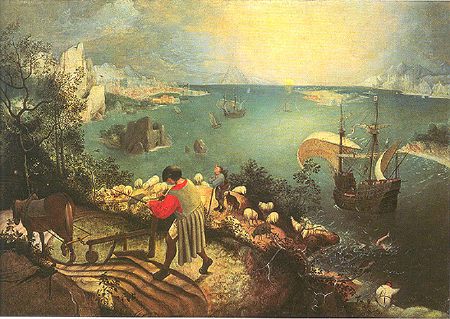Rights, On: I've been digging into rights issues for both the new project (which will get a highlights list soon) and for Souvenir, getting ready to meet with a lawyer referred by a good friend at Universal (until he just busted out). The two bodies of rights I'm working on are life rights and music clearance. Here are some highlights [up front, let me point you to Michael Donaldson's straightforward book, Clearance & Copyright: Everything the Independent Filmmaker Needs to Know. It's not flawless, but it's certainly an informative reference for getting up to speed. It doesn't replace a lawyer, but it's quickly useful for working with one. And if you're serious about making and showing a film, you shouldn't go forward without at least talking to a lawyer at some point.]
Life rights are a perpetually ambiguous aspect of the filmmaking process. I'm trying to determine the most feasible approach to life rights for the new feature project, an (at least partially) animated musical. The key benefits of life rights seem to be 1) getting co-operation and insight from a party, which could improve the accuracy and entertainment value of the project, and 2) lawsuit insurance, since a valid life rights sale basically precludes any chance someone has to sue you for making a movie based on their life.
There are plenty of ways to make a movie without life rights, of course; the Law & Order universe clearly thrives without them. It ultimately comes down to the equations used by potential backers and distributors, who will weigh the value (or cost) of having (or not having) life rights agreements in place.
Some execs flatly state that rights must be in place before they'll even consider a project; not having them is one sign of amateurism and a definite red flag. [Here is a Q&A with Angelique Higgins, the VP of Pierce Brosnan's production company. Go down about 60% for the answer I'm referring to.] The story of Brandon Teena and Boys Don't Cry shows however, that people are happy to move forward--even to rush forward-- without rights in place if the project is hot enough. [Here is one account of the rights race around Teena's story, but just about any of the Google results make for interesting reading.] The conclusion: you absolutely need life rights for a project. Except when you don't.
Music clearance is at once more humorous and more grim. I don't know if advice is suddenly coming in from everywhere, or if I just think everyone's staring at me, knowingly. Whichever, the Slamdance FAQ came through twice with some good, hard advice: In Part 1, they talk about "festival rights" vs comprehensive usage agreements; a lot of short films screen with festival rights in the hope that a distributor or whoever will pony up the dough to get the full music rights or to remix the music altogether. "So what happens is that those music issues will often single-handedly preclude a film from getting distribution." Hmm. No icebox.com for you. Do not pass go.com, to not collect $200. Instead, "using original music from your uncle's Bar Mitzvah band is usually the best bet." And in Part 2, there's this great bit of advice on filling out the festival application:
Q: Where it says music, is that the composer or what band is on the soundtrack?
A: It can be either. But if you've got the Rolling Stones on your temp track and don't have the rights, it's best to stop kidding yourself and stick to your cousin Joey as the composer.
And the only article from
Filmmaker Magazine I haven't mentioned yet (until now, that is), talks about the dangers of "falling in love with your temp track." It's apparently too easy and too common to spot indie films that have been edited to the soundtrack of
The Mission. You can
buy it here. As if you didn't have it already... Donaldson's book also has a very useful, sobering read about getting rights squared away and the importance of sticking to the letter of the agreements. Music clearance services never looked so good to me as they do now.
The Takeaway: Tracks on Souvenir where we're already making progress on securing rights will stay, but the ones I've been deluding myself on (Pink Floyd's Heart Beat, Pig Meat and Wu Tang) are O-U-T, or O-T-W (On The Way), anyway. My Zabriskie Point/Antonioni homage will have to come from the box office instead (D'oh!).














